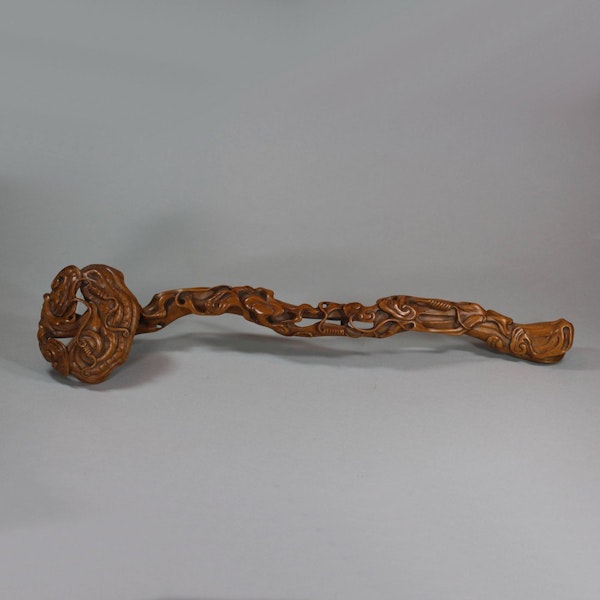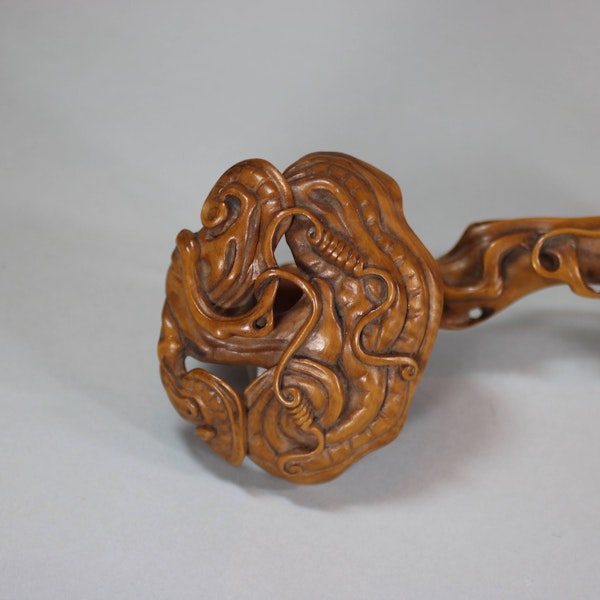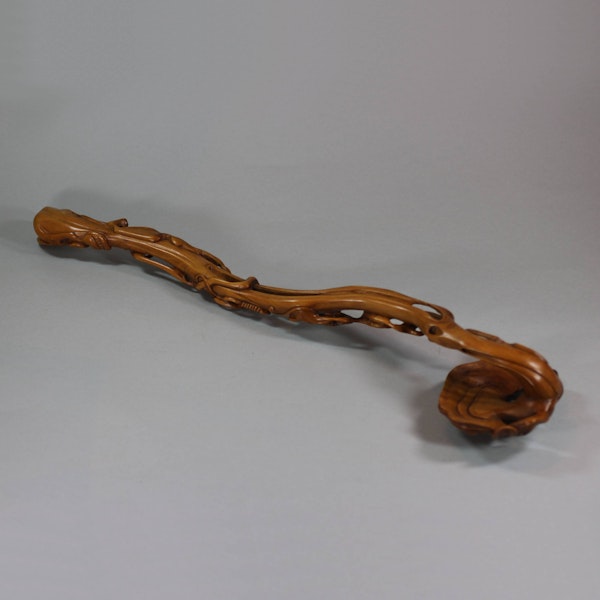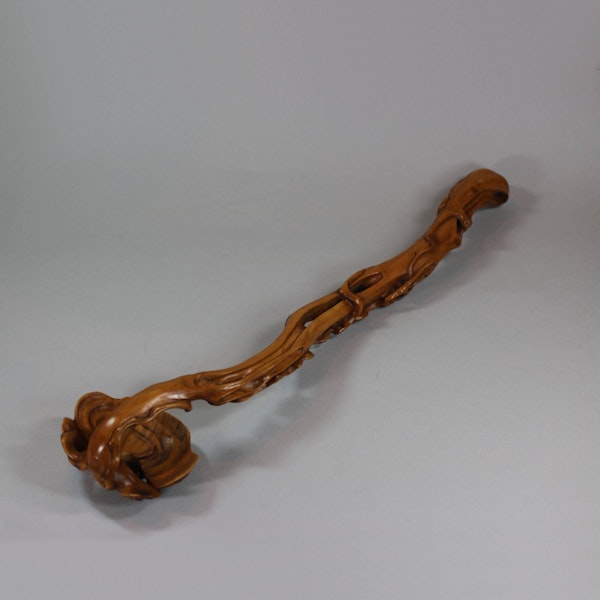Chinese boxwood ruyi sceptre, 19th/20th century
Chinese boxwood ruyi sceptre, 19th/20th century
POA
Description
Chinese boxwood ruyi sceptre, 19th/20th century, the body formed into a gnarled branch encircled by tendrils of vines and smaller fungi, terminating in a flat head of lingzhi fungus shape.
Condition: Good
Notes:
Ruyi sceptres are a type of decorative baton that can be made from a range of materials, used as a ceremonial emblem associated with leadership and knowledge. Though the ancient origins of ruyi-sceptres are unknown, by the later Han (25-229 AD) it was common practice for scholars and nobles to hold a ruyi-shaped staff during discussions, to indicate that the holder was about to take their turn to speak. As a symbol of power, they were associated with the Imperial family but also with Buddhist and Daoist figures. There are depictions of Bodhisattvas holding ruyi-sceptres from the 8th century, and similar sceptres also appeared in Daoist art from an early date as the attribute of several different xian, including the immortal Cai Shen. In Buddhist contexts the sceptre could be interpreted as a kind of symbolic ‘pointer’ used to direct people along the right path, while within Daoist art it appears to have been adopted into the wider iconography of longevity. The Chinese word 如意 (‘ruyi’) loosely translates to ‘as one wishes’, which suggests why ruyi-sceptres also became a particularly popular emblem within literati culture, as self-expression and spontaneity were key tenets of the philosophy adopted by literati scholars. Producing ink paintings and poetry that expressed the experience of the individual’s connection with nature, for example, was a popular pursuit of Tang Dynasty literati, and as these figures and their pastimes gained notoriety in later centuries the accoutrements associated with them also became popular. Thus, the ‘scholars desk’ became a popular motif within Kangxi and Qianlong ceramic design, typically depicting an array of objects, including scrolls, vessels and inkstones as well as ruyi-head sceptres in allusion to great scholarship and personal accomplishment. Ruyi-head sceptres themselves were also popular as auspicious ornaments or luxurious gifts, and the Qianlong Emperor bestowed a ruyi-head sceptre to the British Ambassador in 1793 as a symbol of goodwill between the two powers. The Palace Museum in Beijing alone has over 3000 ruyi-head sceptres in its collection, with materials ranging from gold to coral. Other examples such as this one were made from the precious and slow-growing littleleaf boxwood, which was particularly prized for use in carving owing to its fine grain, resistance to splitting and relatively high density.
| item details | |
|---|---|
| Material and Technique | Boxwood |
| Origin | Chinese |
| Period | 20th Century |
| Condition | Excellent |
| Dimensions | Length: 41.5cm. (16 ½ in.) |
Product REF: U664








